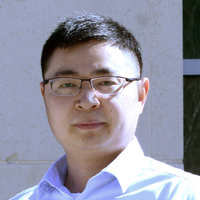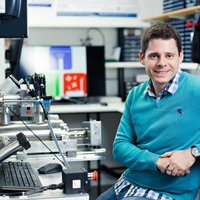For almost two decades, scientist all over the world have been debating the same question: Is it possible to take advantage of the bioluminescent properties of certain living beings, like bacteria, to design lighting systems which do not require electricity? Until now, the answer to the question has always come back as no. Though there have been some successful small scale prototypes, adapting this concept to light the world is a complicated proposition. Bacteria need a suitable environment to survive, and stabilizing them to support different conditions is not deemed as a viable option.
But the young, Spanish researcher Rubén Costa has managed to turn this belief on its head. Along with his team, he has successfully stabilized proteins produced by E.coli bacteria outside an aqueous medium. And with these proteins, the team can easily produce BioLEDs – a low-cost, healthy and environmentally friendly lighting system which boasts similar performance to the LEDs already commercially available. Thanks to this advance, Costa has been recognized as one of MIT Technology Review, Spanish edition's Innovators Under 35 Europa 2017. "We stabilized the first proteins two and a half years ago, and we are still waiting for them to degrade; they haven´t stopped giving off light," Costa highlights.
The LED lightbulbs now commonly found in homes emit white light through a blue light chip covered with an inorganic material that produces an orange colored light. It is the combination of the two which leads to LEDs´ characteristic white light. But last year, doctors from the American Medical Association warned of the potential risks that this technology can pose for human health and for the environment.
On the one hand, blue light is the brightest and most dangerous for the human visual system, and can provoke adverse effects like reduced visual acuity, retinal damage, sleep disruption or loss of appetite, among others. On the other hand, the orange colored inorganic phosphor belongs to the rare earth group of chemical elements, so named for their scarcity. This phosphorus can only be found in very specific locations worldwide and its extraction is not only controlled by a small number of countries but is also costly and implies heavy environmental impacts.
Costa´s proposal includes the substitution of inorganic phosphor with healthier, more accessible and affordable biological proteins. "The luminescent proteins can be easily produced in the lab from bacteria anywhere in the world," the young innovator points out. And he adds: "What we have done is to take those proteins and stabilize them through a combination of two polymers in a new material in the shape of rubber that substitutes the inorganic phosphor and emits a purer light, more similar to sunlight."
Soon it will be possible to apply this material to computer screens, televisions and mobile phones, as well as home and office applications like lightbulbs. Its primary advantage is that, thanks to Costa´s technology, the devices will be capable of imitating the variability of the light spectrum of the sun throughout the day, which allows the human brain and eyes to adapt to these light emissions more naturally. To this end, Costa is working on detailing all of the technology to bolster the search for investors and interested companies.
In the words of the physics professor at the Autonomous University of Madrid (Spain), former Innovator Under 35 and jury member for the 2017 European edition, Jorge Bravo, "Rubén is a researcher with an impressive scientific track record and a pioneer in the development of this technology, which could have a very significant industrial impact."
By Marta González
Translation: Teresa Woods




